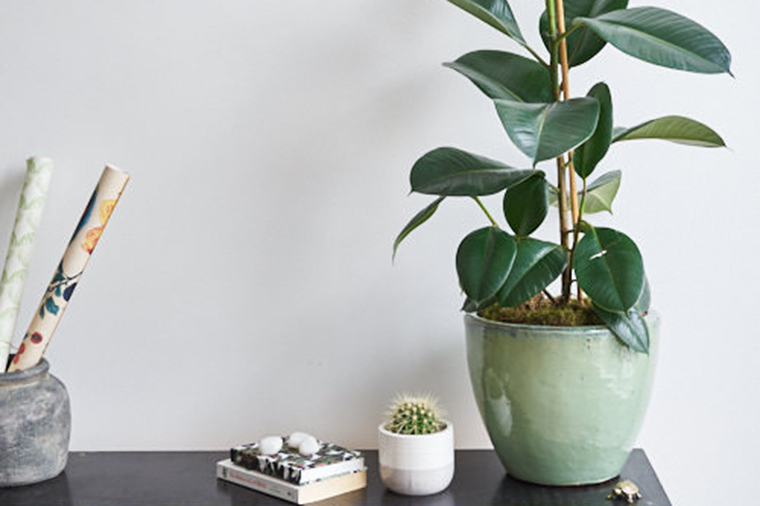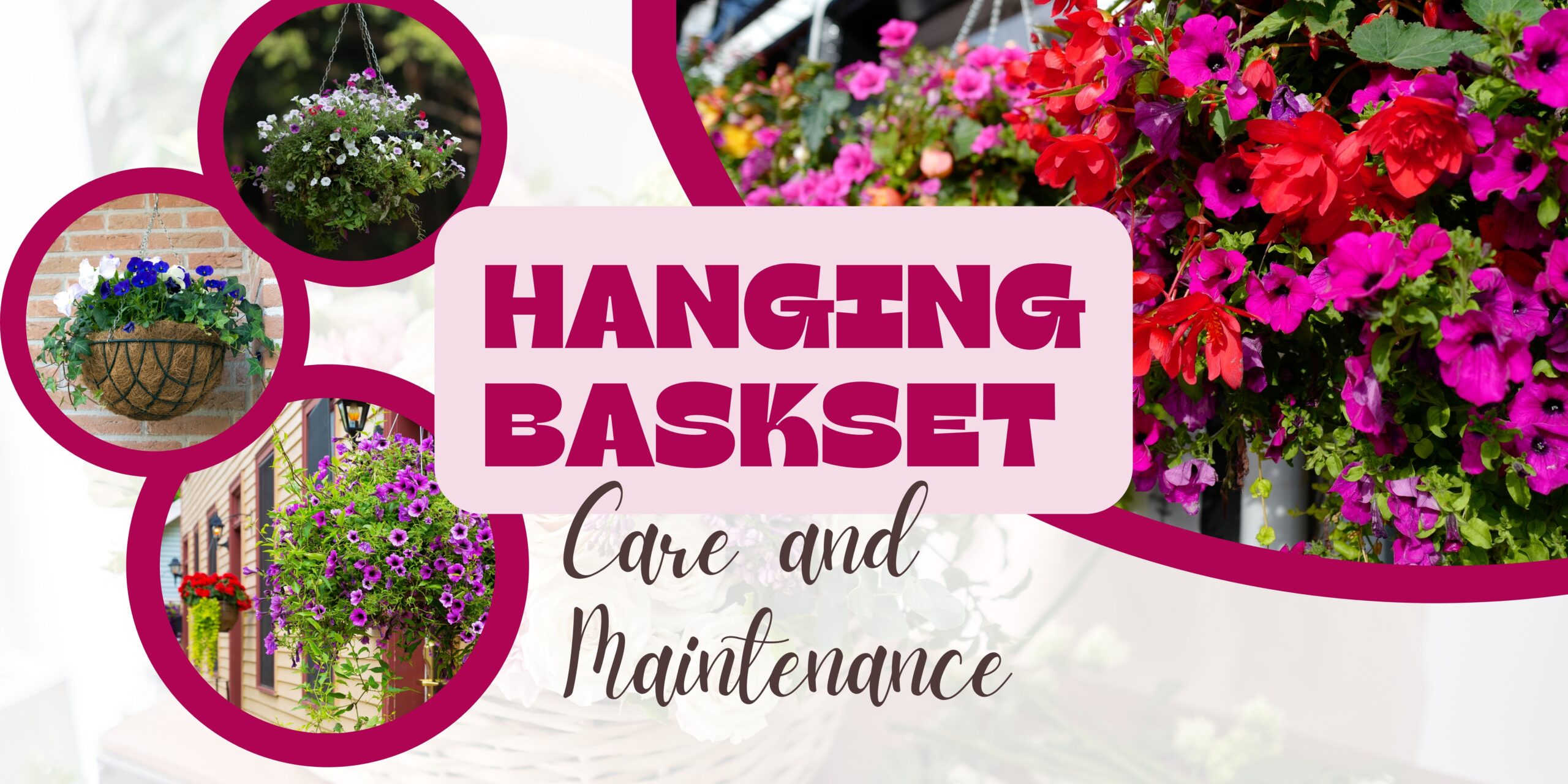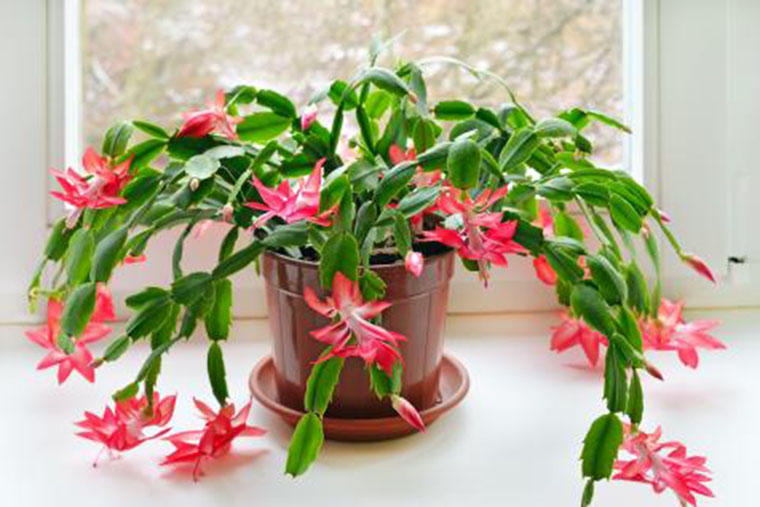All About Rubber Plants
The rubber plant, Ficus elastica, also known as rubber fig is a species of flowering plant in the Moraceae family, native to eastern parts of South Asia. While in their native climate some species can grow to an impressive 100ft tall or more, here in North America we’re most familiar with growing these plants as houseplants. When grown indoors, their height can vary considerably, between 2 and 10ft tall, depending on the variety and the conditions of your home.
Rubber plants are most loved for their large broad oval leaves that make a statement in any home. Leaf size tends to be largest on new plants and begins to grow smaller as the tree matures over time. Another interesting feature of the rubber plant is how new leaves develop. New leaves emerge inside a sheath at the stem ends, which grows larger as the new leaf matures. When it has matured, it unfurls and the sheath drops off the plant. Inside the new leaf, another immature leaf is waiting to develop.
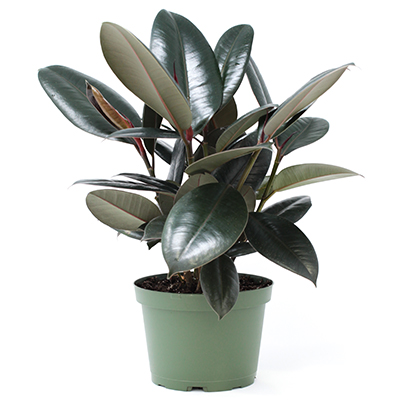
Ficus elastica ‘Burgundy’
The Burgundy is named for its deep, thick, dark green to almost black foliage on red stems. Give it bright light and ample humidity for the best foliage color.
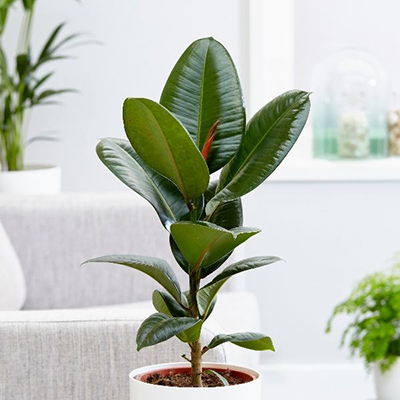
Ficus elastica ‘Robusta’
The Robusta is a hardy variety with leathery large green foliage. It can tolerate low humidity better than other varieties and as a result, can easily reach a height of 4-6 ft.
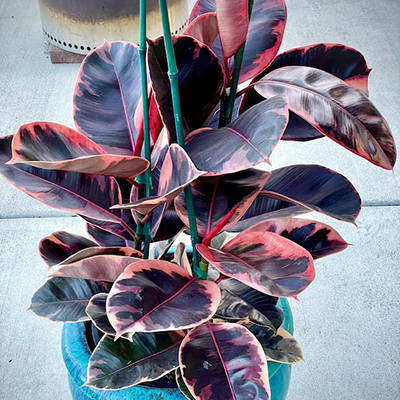
Ficus elastica ‘Ruby’
This interesting variety offers large dark green leaves densely variegated with purple, red, and pink hues. The new leaves emerge in a brilliant shade of pink-red.
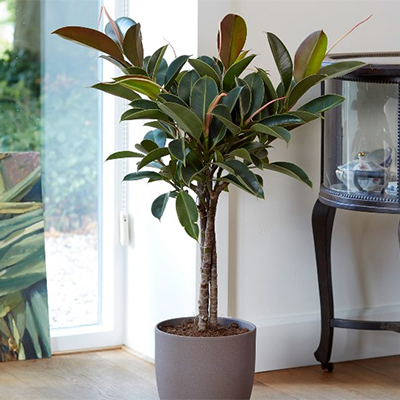
Ficus elastica ‘Melany’
Dark, glossy green leaves are similar to the Robusta or the Burgundy but with more compact growth.
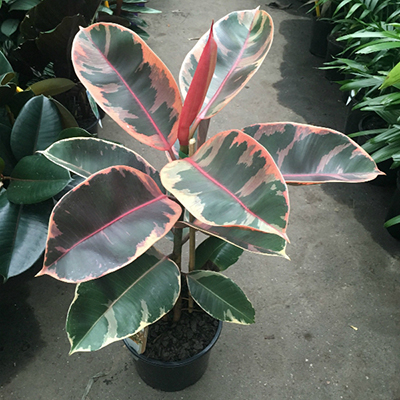
Ficus elastica ‘Tricolor’
This beautiful variety features bright, variegated, thick leathery leaves with a waxy surface. The foliage has an awesome combination of green, pink, and cream.
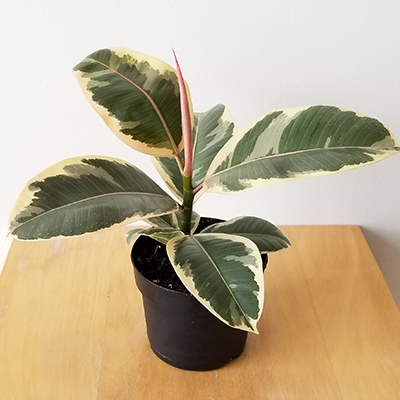
Ficus elastica ‘Tineke’
This variety, while similar to the tricolor, displays dark and light green patchy leaves with creamy margins and pink stems.
Plant Care
Light
Rubber plants thrive in areas with a good balance of full sun and indirect light. Take care not to house plants in rooms that receive direct sunlight the entire day. A good measure for the proper brilliance of a room is to keep the plant in a room where one’s shadow can be easily seen on the wall behind the plant for a few hours of the day.
Soil
Choose a soil that has a good balance of moisture absorption and water drainage. You want the soil to remain moist but you don’t want it to remain saturated leading to disease or root rot.
Water
Rubber plants are thirsty plants and if potted correctly may dry out faster than other plants. Keep a close eye on the moisture levels of the soil. Once the top two inches are dry water well with lukewarm water. These plants do best with water baths rather than top-down watering.
TIP : Before watering or using a water bath, fill your watering method with tap water and let it stand for 30 minutes. This will not only ensure the water is room temp, but it allows the chlorine within the tap water time to evaporate. This extra step will benefit the long-term health of your plant.
Humidity
Rubber plants are tropical plants that thrive in humid conditions. Use a humidifier to bring the humidity levels up, especially in winter when indoor air tends to be dry. A saucer with gravel and water also provides humidity as the water evaporates. Misting with room-temperature water also helps.
Repotting
Rubber plants need to be transplanted into larger pots periodically. Failing to transplant plants into larger pots can cause root damage that will stunt their growth. Be sure to use fresh soil for each new potting.
Pot Size
Some binding is necessary for stability and maintaining a tight root ball for later transplanting. For this reason, transplant rubber plants into pots that are no more than 1 inch larger in diameter each time.
Toxicity
Rubber plants, with thick, shiny leaves, can be moderately toxic to animals. Ficus elastica has an irritating sap when its stems and leaves are cut. This sap irritates the skin and harms the digestive system if eaten, usually starting with mouth irritation and swelling.
Plant Problems
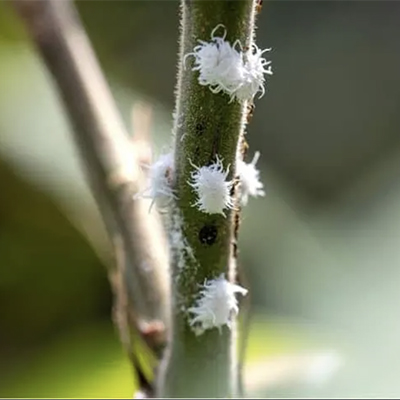
Pest Problems
Rubber plants are susceptible to many common pests such as fungus gnats, mealybugs, scale insects, spider mites, root-knot nematodes, and thrips.
Treatment :
1. Isolate and Prune Your Plant – Isolate your infested plant from others to prevent spread. Once your plant has been isolated, identify and prune away the affected areas with the heaviest infestation. It is best not to prune more than 1/3 of the total plant. Be sure any infested clippings are bagged and sealed immediately after pruning. Consider wearing disposable gloves or washing your hands immediately after dealing with an infested plant.
2. Wash Your Plant – Once the heaviest infested areas have been removed, it is important to also treat the remaining plant. Washing your plant with a handheld shower nozzle using room temperature water, can help to dislodge and remove any remaining pests. Pay close attention to the underside of leaves especially and the small nooks and crannies they enjoy.
3. Treat with Natural Pesticides – It is unlikely a pruning and a thorough wash will get every last bit of the infestation, following up with a pesticide is usually necessary. If you want to avoid harsh chemicals on your plants or in your home, there are a few more natural options. Neem oil, Cinnamite, and Rosemary Oil diluted with water are more natural, yet effective options.
Prevention :
1. Keep Your Plant Healthy – By making sure your plant has the right balance of light, humidity, water, and temperature for its optimal health is the best way to prevent pest infestations. Pests tend to take up residence in plants that are struggling, rather than those that are thriving.
2. Clean the Leaves – Dusty leaves are another attractant for several types of pests. Regular dusting can significantly decrease the likelihood of future infestations.
3. Use a Preventative – Once your leaves are clean, a last line of defense is to use a natural oil to help create a protective barrier on the leaves. For maximum efficiency, neem oil should be re-applied regularly.

Pathogen Problems
Pathogen (fungal and bacterial) problems may also occur in the form of leaf spots, crown gall, twig dieback, and Southern Blight.
Treatment :
1. Isolate and Prune Your Plant – Isolate your infected plant from others to prevent spread. Once your plant has been isolated, identify and prune away the affected areas. It is best not to prune more than 1/3 of the total plant. Be sure any infected clippings are bagged and sealed immediately after pruning. Consider wearing disposable gloves or washing your hands immediately after dealing with the infected parts of the plant.
2. Repot Your Plant – Pathogens occur in soil that has an unhealthy microbiome. This typically occurs when a houseplant has been overwatered too often. Wait until the soil is fairly dry, but not bone dry, and remove the root ball and its soil from the pot. Carefully, shake away as much soil as possible from the root system. If there are rotting roots, go ahead and trim away the rotting areas. Gently rinse the remaining roots and replant in NEW soil in a CLEAN pot. Be sure NOT to use the old pot until after it has been sterilized.
3. Adjust the Plants Environment – Try watering less or moving the plant to a brighter warmer location.
Prevention :
1. Keep Your Plant Healthy – By making sure your plant has the right balance of light, humidity, water, and temperature for its optimal health is the best way to prevent pathogens. Pay careful attention to watering and humidity in particular.
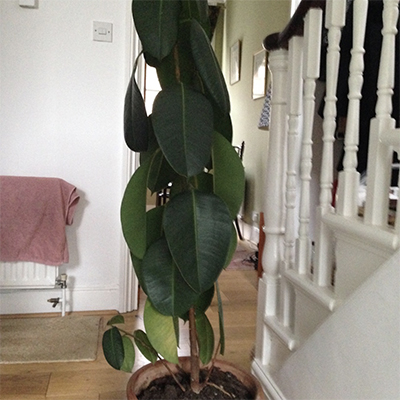
Leaf Droop
Leaf droop is typically a sign of not enough sunlight. Rubber plants like light, if your plant is not getting any direct light or long enough hours of bright indirect light it may begin to droop. Try a brighter location.

Leaf Drop
Leaf drop can occur when a plant has been underwatered or overwatered. If you notice many leaves have dropped at once and the soil is dry, then it has gone too long between waterings. If you notice a leaf or two drop after it has been recently watered, it is likely due to too much water. The key is to pay attention to the soil and adjust your watering schedule to keep a more consistent moisture level, only allowing the top two inches to dry out on larger plants (one inch for smaller plants/pots).
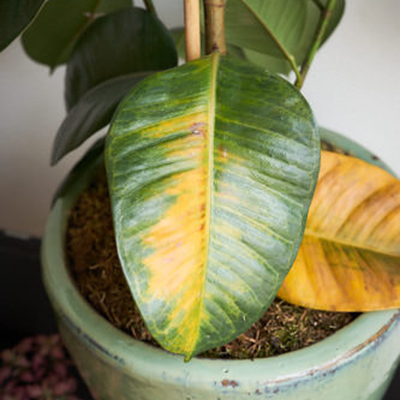
Yellow Leaves
Like leaf drop, yellowing leaves can be a sign of under or over-watering. Usually, yellow leaves are a sign of overwatering; however, they can also occur when a plant has been dry and then gets a heavy watering, saturating the soil and stressing the plant.
 |
| 
